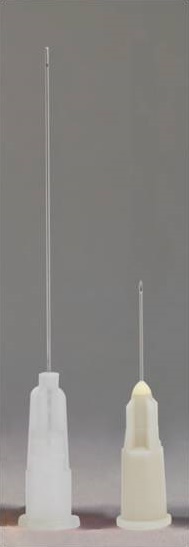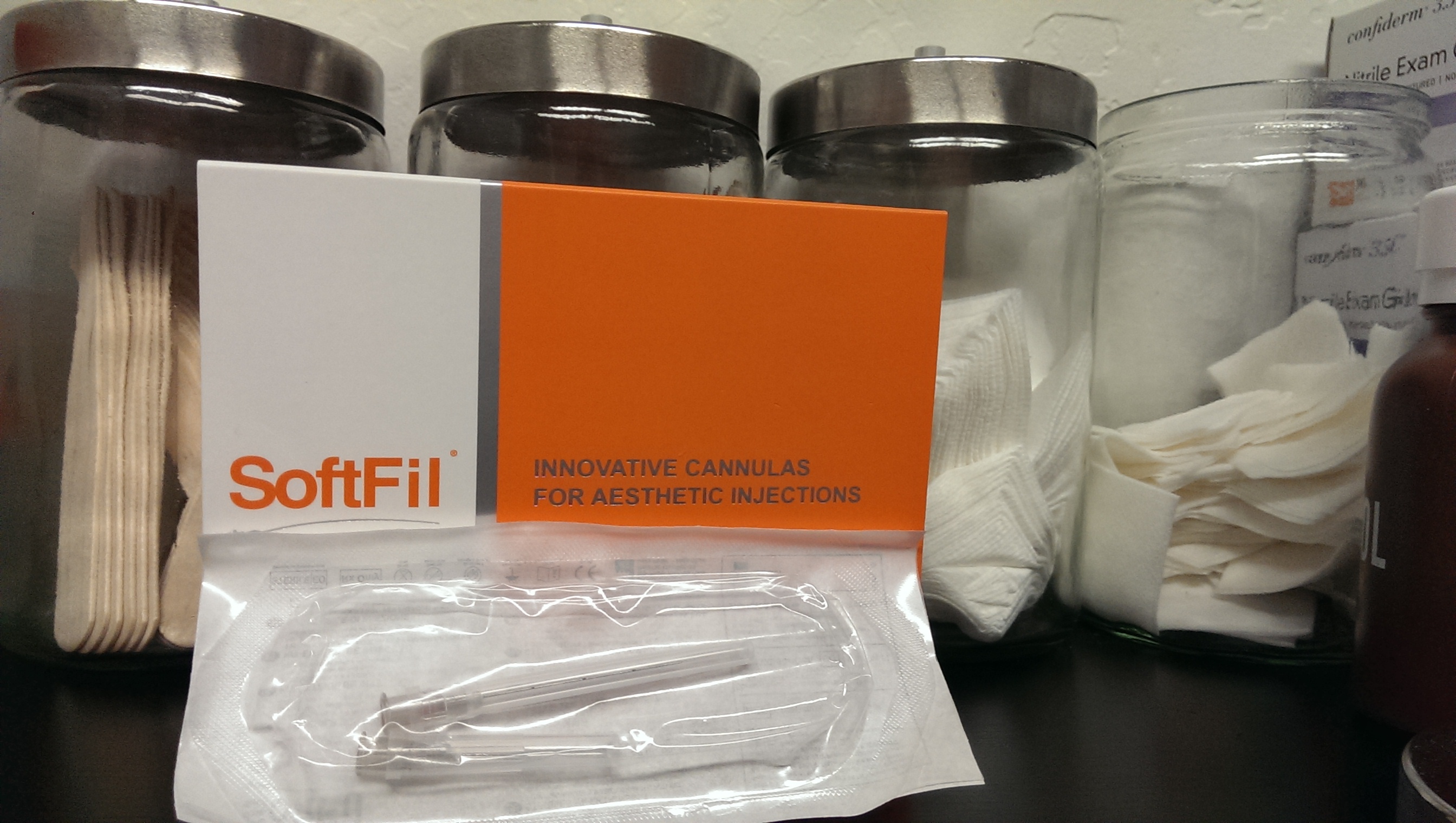
What is a Cannula?
What is a Cannula?
A cannula is a flexible, blunt tipped instrument that is used for injecting, whereas a needle is a sharp tool, that pierces the skin (see image on left). This begs the question, if a cannula is blunt, how exactly is it used for injecting? With a cannula, you must first make a starter hole with a needle, and then the cannula is inserted into that hole. You may be asking, why go through the trouble of first making a hole with a needle, and then using a cannula? Why not simply use a needle?
The Advantages of a Cannula
The Advantages of a Cannula
Decreased Trauma
There are several advantages of using a blunt tipped cannula in aesthetic treatments. Firstly, a cannula is typically much longer than a needle, and it is flexible. This increased length and flexibility allows you to create a single injection point, and push the cannula the skin, reaching a much greater area than a needle can. To cover that same area with a needle, it would require multiple injection points. By having only one injection point, you are reducing trauma to the tissue, which can lead to decreased bruising, and reduced downtime. This is especially true for sensitive areas, like under the eyes.
Reduced Risk of Complications
Needles are indiscriminate when it comes to your tissues. Their sharp tips will pierce through anything, including veins. However, because the tip of a cannula is blunt, you avoid damage to veins and arteries, by moving around them. This decreased vascular damage can reduce bruising and the risk of complications.
Improved Results
Because cannulas are longer and more flexible than needles, they allow for broad, sweeping strokes, which can create a softer more natural look. Much like giving a painter multiple brushes, cannulas allow injectors an additional tool. This tool allows them to add to their artistry and give patients their desired aesthetic appearance they are looking for.
Disadvantages of Cannulas
Disadvantages of Cannulas
Training and Cost
Every box of filler comes with a needle that is intended to be used for injection of filler. Adding cannulas to your treatment results in an increased cost to the practitioner, with a cost of about $5-7 per cannula. Also, because dermal fillers were approved only with the use of needles, needle injected training is the only training provided by the dermal filler companies, such as Allergan, and Galderma. If a doctor is looking to learn more about using cannulas in their treatments, they will have to seek that training out, often at a cost to the doctor. This additional training, cost, and new learning curve often discourages doctors from learning how to use cannulas in aesthetic treatments.
Conclusion
While cannulas shouldn’t completely replace needles in the injection of aesthetic dermal fillers, in order to best serve the beauty goals of our patients, aesthetic doctors should incorporate a wide range of tools in their practice. Adding cannulas to your aesthetic arsenal can increase patients results, while reducing downtime and complications.
If you are interested in seeing how cannulas are used in aesthetic treatments, there is a video below from SoftFil. At Elemental Aesthetics we have tried various brands of cannulas, and prefer the SoftFil cannula for injecting dermal fillers.

